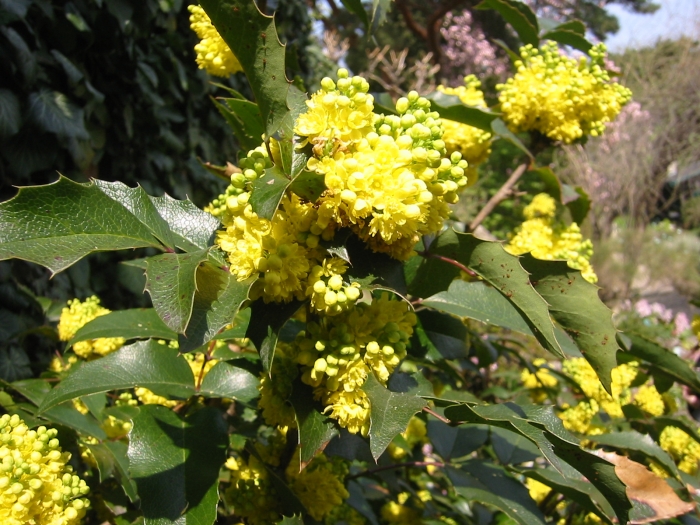Dwarf Oregon-Grape
(Mahonia nervosa)
Dwarf Oregon-Grape (Mahonia nervosa)
/
/

DHochmayr
Public domain



































































Estimated Native Range
Summary
Dwarf Oregon-Grape is valued for its year-round interest, with its holly-like foliage, yellow spring flowers, and blue berries that attract birds. It is used in shaded garden areas, as ground cover, or in naturalized woodland settings. This plant prefers partial to full shade, requires low to moderate watering, and thrives in well-drained, acidic soils. It is relatively low-maintenance but can suffer from rust and leaf spot diseases. While it is not aggressive, it can spread via rhizomes to form colonies.CC BY-SA 4.0
Plant Description
- Plant Type: Subshrub, Shrub
- Height: 1-2 feet
- Width: 3-4 feet
- Growth Rate: Slow
- Flower Color: Yellow
- Flowering Season: Spring
- Leaf Retention: Evergreen
Growth Requirements
- Sun: Part Shade
- Water: Low
- Drainage: Medium
Common Uses
Bank Stabilization, Bee Garden, Bird Garden, Border Plant, Butterfly Garden, Deer Resistant, Drought Tolerant, Edible*Disclaimer: Easyscape's listed plant edibility is for informational use. Always verify the safety and proper identification of any plant before consumption., Erosion Control, Fire Resistant, Fragrant, Groundcover, Hummingbird Garden, Low Maintenance, Rabbit Resistant, Showy Flowers
Natural Habitat
Understory of coniferous forests in the Pacific Northwest, with a maximum height of 3 feet (0.9 m), preference for partial to full shade, and well-drained, acidic soils
Other Names
Common Names: Cascade Barberry, Cascade Oregon-Grape, Dull Oregon-Grape, Cascade Mahonia, Dwarf Oregon Grape
Scientific Names: , Mahonia nervosa, Berberis nervosa, Berberis nervosa var. mendocinensis, Mahonia glumacea, Berberis glumacea, Berberis nervosa subsp. mendocinensis, Berberis nervosa var. nervosa, Mahonia nervosa var. mendocinensis, Mahonia nervosa var. nervosa
GBIF Accepted Name: Mahonia nervosa (Pursh) Nutt.